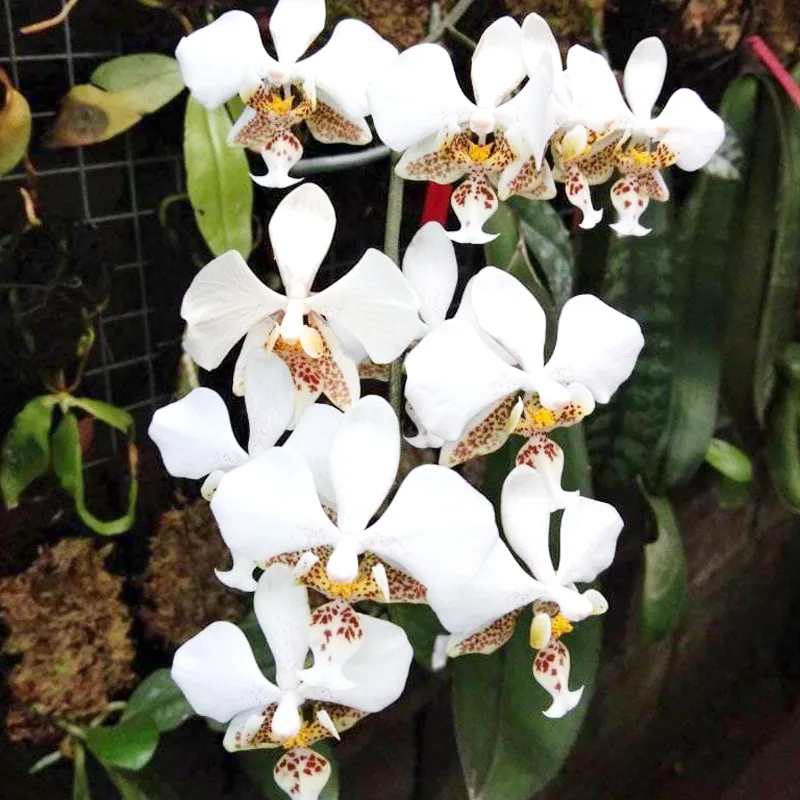
The Enchanting Lilium Longiflorum: A Guide from Bud to Bloom
For years, Lilium longiflorum, or the Easter lily, has graced my home with its elegant presence. These trumpet-shaped blooms, boasting a heavenly fragrance, hold a special place in my heart. But beyond their initial beauty lies the potential for a long-lasting companion in the garden. With proper care, Lilium longiflorum can reward you with years of dazzling displays.
This article is a culmination of my experience and learnings in nurturing these magnificent flowers. Whether you’re a seasoned gardener or just starting your floral journey, I’ll guide you through everything you need to know about Lilium longiflorum, from caring for a spent bloom to cultivating vibrant new ones.
Where Does the Magic Begin? Choosing Your Lilium Longiflorum
The first step is to find the perfect Lilium longiflorum for your space. These lilies come in a variety of sizes, ranging from dwarf varieties reaching a foot tall to giants towering over three feet. Consider the scale of your garden and choose a size that complements its design.
Lilium longiflorum also boasts a delightful selection of colors. The classic white is a timeless choice, but you can also find varieties in shades of pink, apricot, and even a stunning deep yellow. Let your personal preference guide your selection.
When purchasing bulbs, ensure they are firm and free of blemishes. Opt for bulbs that feel heavy for their size, indicating a good amount of stored energy for growth.
Easter Lily vs Daffodil
Between Easter Lily and Daffodil, I find that Easter Lilies have a more striking presence with their large, fragrant blooms compared to the cheerful but smaller Daffodils.
Easter Lily vs Calla Lily
When I compare Easter Lily with Calla Lily, I appreciate the elegant and sculptural form of Calla Lilies, but the traditional beauty of Easter Lilies feels more festive.
Easter Lily vs Peace Lily
The Easter Lily’s strong, sweet fragrance and pristine white flowers always win me over when compared to the more subtle and foliage-focused Peace Lily.
Easter Lily vs Asiatic Lily
I love the classic look of Easter Lilies, but the vibrant colors and hardiness of Asiatic Lilies often make them a favorite in my garden.
Easter Lily vs Daylily
Daylilies‘s reliability and variety make them appealing, yet the elegant blooms of Easter Lilies hold a special place in my heart, especially around Easter.
Easter Lily vs Stargazer Lily
Stargazer Lilies’s dramatic pink and white flowers are captivating, but the simplicity and purity of Easter Lilies resonate more with me during the spring season.
Easter Lily vs Tiger Lily
I admire the bold, orange-spotted blooms of Tiger Lilies, but the Easter Lily’s timeless, graceful flowers feel more fitting for celebrations and special occasions.
How to Grow Lilium Longiflorum?
Now that you have your dream Lilium longiflorum, it’s time to prepare them for a flourishing life in your garden. Here’s how:
Planting:
- Timing is key: Ideally, plant your Lilium longiflorum bulbs in the fall, around 6-8 weeks before the first frost. This allows the roots to establish themselves before winter dormancy.
- Location, location, location: Lilies prefer a sunny spot with well-drained soil. Avoid waterlogged areas, as they can lead to bulb rot. Amending your soil with compost or organic matter can improve drainage and provide essential nutrients.
- Digging deep: Lilies are deep-rooted plants. Aim to plant your bulbs 2-3 times their own depth. For example, a 2-inch bulb should be planted 6 inches deep.
- Spacing it out: Ensure proper airflow between your lilies by spacing them according to their mature size. Dwarf varieties can be planted closer together (around 6 inches apart), while larger varieties require more breathing room (up to 12 inches apart).
Care During Growth:
- Watering wisely: Lilies enjoy consistent moisture, especially during their growth and flowering stages. Water deeply when the top inch of soil feels dry, allowing the water to reach the roots. Avoid overwatering, which can lead to rot.
- Feeding for success: Fertilize your Lilium longiflorum with a balanced fertilizer during the spring and early summer. Stop fertilizing once the flowers have faded.
- Mulch magic: Applying a layer of mulch around your lilies helps retain moisture, regulate soil temperature, and suppress weeds.
How to care for Lilium longiflorum after flowering?
Even after the blooms have faded, your Lilium longiflorum journey isn’t over! Here’s how to nurture them for future success:
- Deadheading: Once the flowers have wilted, remove them by carefully cutting the stem just below the spent bloom head. This prevents seed formation and encourages the plant to focus its energy on foliage growth for next year’s blooms.
- Continued care: Continue watering and fertilizing your Lilium longiflorum throughout the summer, allowing the foliage to grow and replenish the bulb’s energy stores.
- Fall preparation: As fall approaches and the leaves begin to die back, you can either leave the bulb in the ground (in zones 4-8) or dig it up for winter storage (in colder zones). If you choose to leave it in the ground, apply a layer of winter mulch to protect the bulb from freezing temperatures.
Enjoying Lilies for Years to Come: Additional Tips
- Dividing the bounty: After several seasons, your Lilium longiflorum bulbs may become crowded, leading to fewer flowers. You can divide the bulbs in the fall, allowing each section enough space to thrive.
- Companion planting: Lilies look stunning paired with other shade-loving perennials like hostas, ferns, and coral bells.
With a little care and attention, your Lilium longiflorum will reward you with years of breathtaking blooms. So, get your hands dirty, embrace the magic of these captivating flowers, and transform your garden into a haven of elegance and fragrance.
If i die, water my plants!



